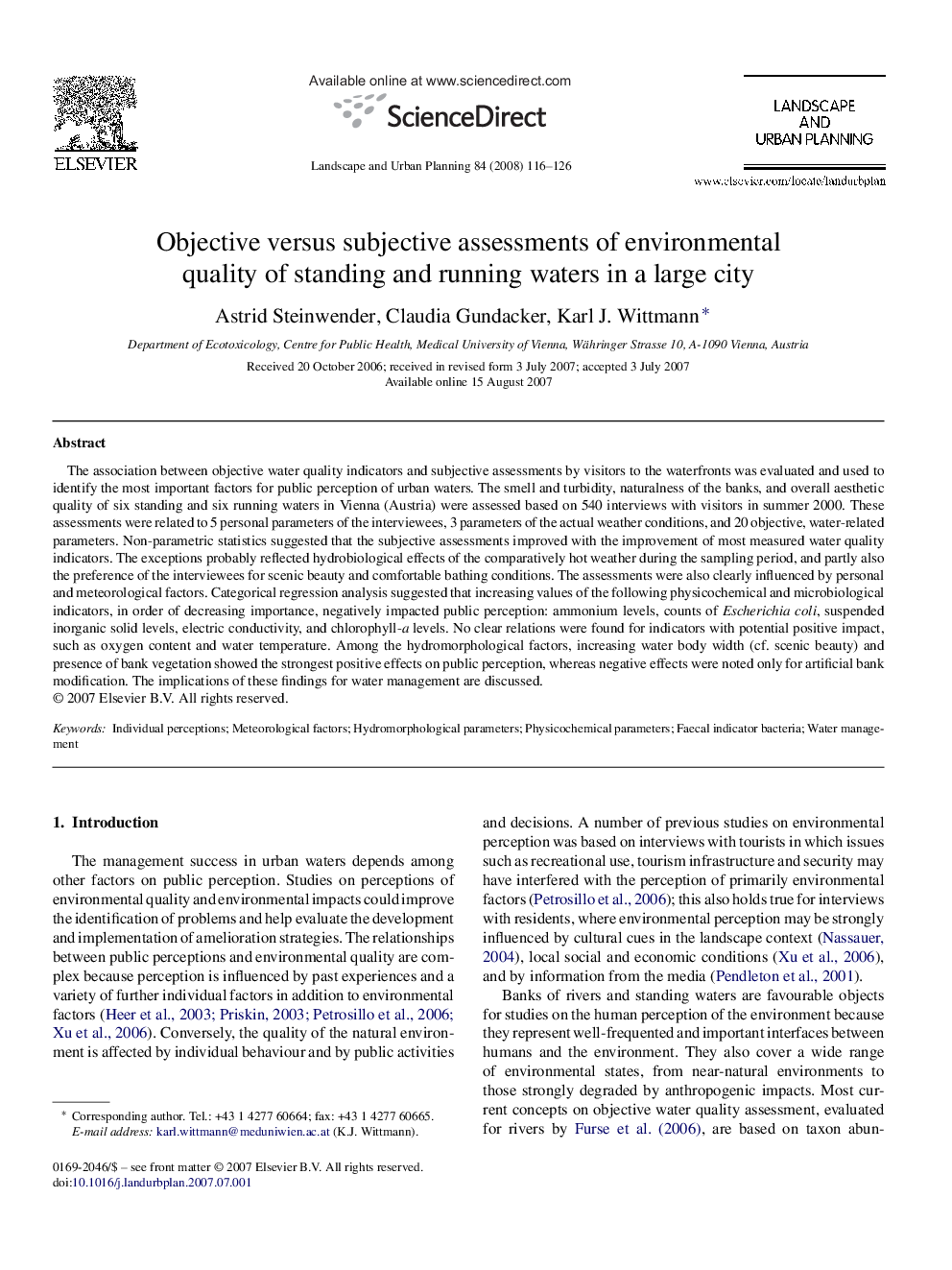| کد مقاله | کد نشریه | سال انتشار | مقاله انگلیسی | نسخه تمام متن |
|---|---|---|---|---|
| 1050406 | 945688 | 2008 | 11 صفحه PDF | دانلود رایگان |

The association between objective water quality indicators and subjective assessments by visitors to the waterfronts was evaluated and used to identify the most important factors for public perception of urban waters. The smell and turbidity, naturalness of the banks, and overall aesthetic quality of six standing and six running waters in Vienna (Austria) were assessed based on 540 interviews with visitors in summer 2000. These assessments were related to 5 personal parameters of the interviewees, 3 parameters of the actual weather conditions, and 20 objective, water-related parameters. Non-parametric statistics suggested that the subjective assessments improved with the improvement of most measured water quality indicators. The exceptions probably reflected hydrobiological effects of the comparatively hot weather during the sampling period, and partly also the preference of the interviewees for scenic beauty and comfortable bathing conditions. The assessments were also clearly influenced by personal and meteorological factors. Categorical regression analysis suggested that increasing values of the following physicochemical and microbiological indicators, in order of decreasing importance, negatively impacted public perception: ammonium levels, counts of Escherichia coli, suspended inorganic solid levels, electric conductivity, and chlorophyll-a levels. No clear relations were found for indicators with potential positive impact, such as oxygen content and water temperature. Among the hydromorphological factors, increasing water body width (cf. scenic beauty) and presence of bank vegetation showed the strongest positive effects on public perception, whereas negative effects were noted only for artificial bank modification. The implications of these findings for water management are discussed.
Journal: Landscape and Urban Planning - Volume 84, Issue 2, 6 February 2008, Pages 116–126